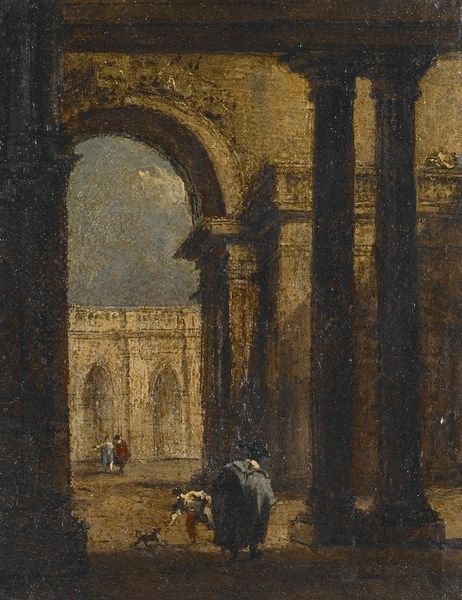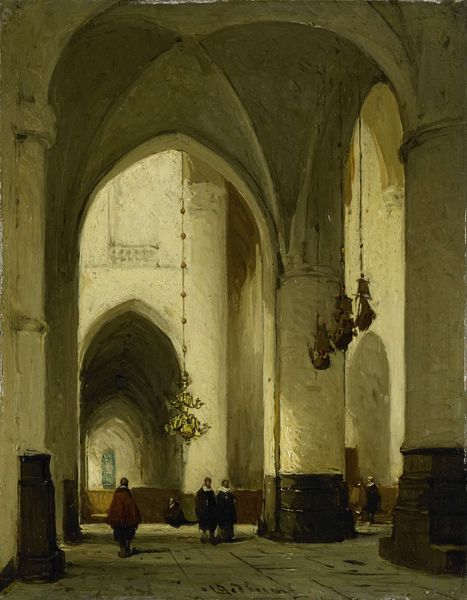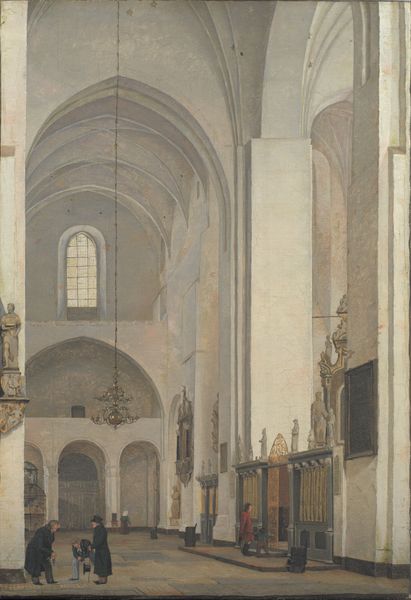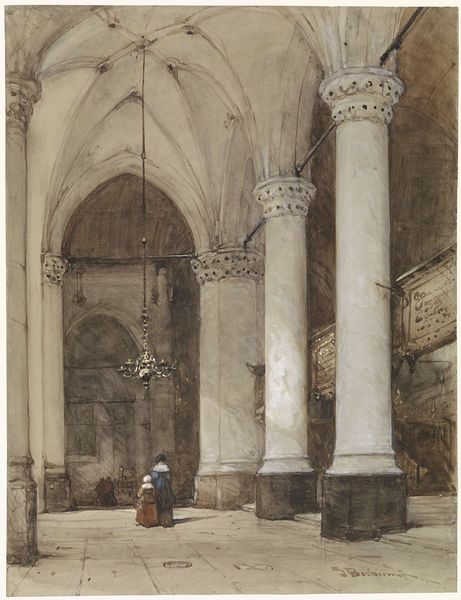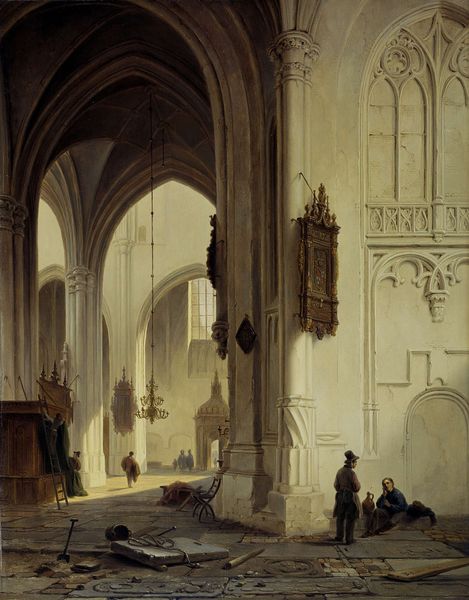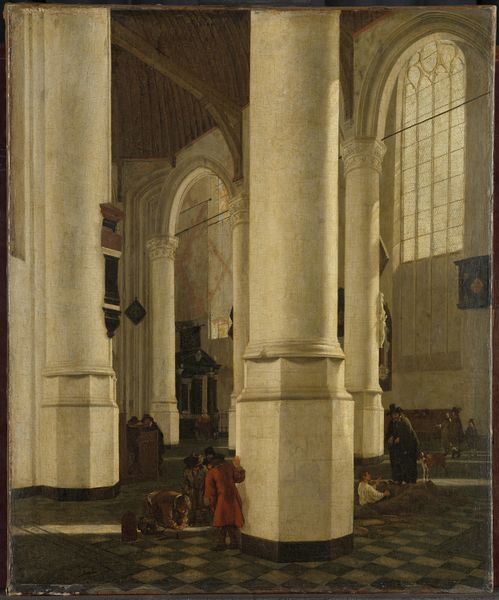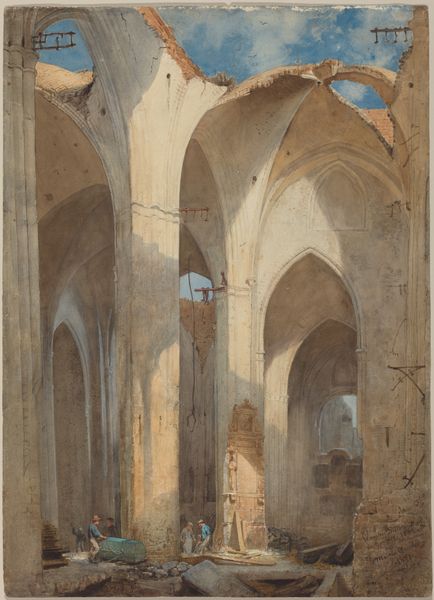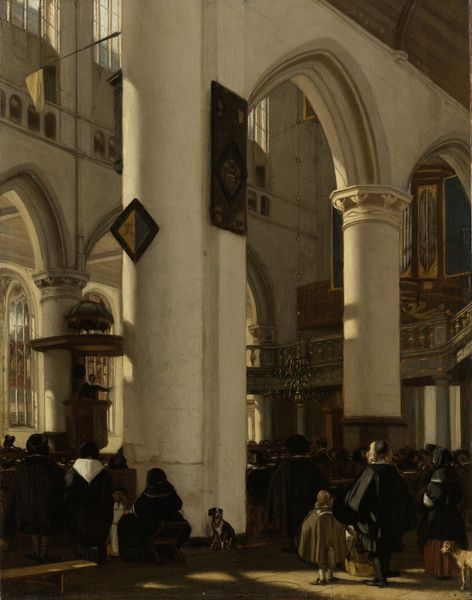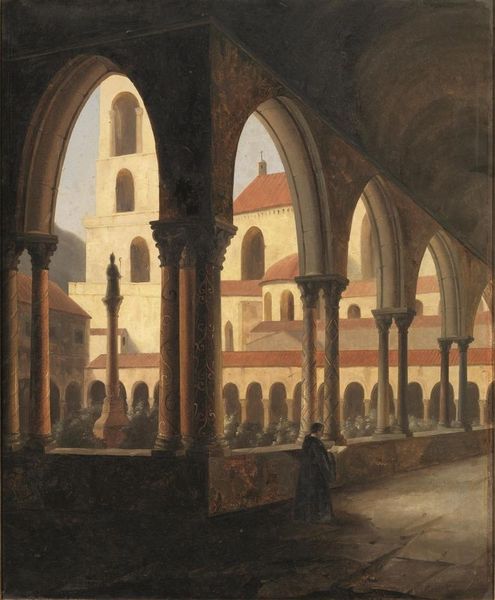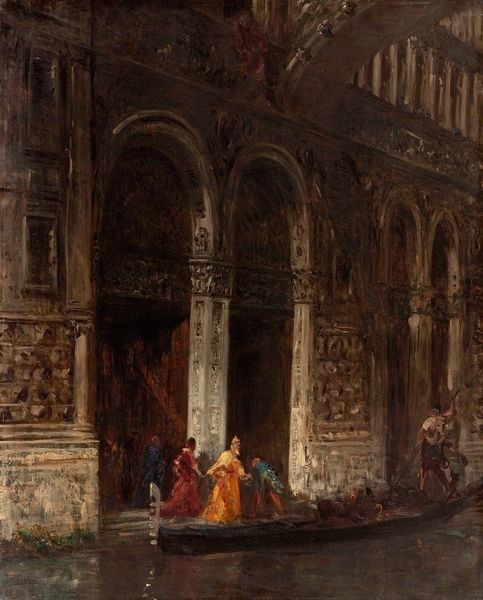
Dimensions: height 33 cm, width 22.2 cm, thickness 1.3 cm, depth 10 cm
Copyright: Rijks Museum: Open Domain
Editor: This is Johannes Bosboom's oil painting, "Interior of the 'Hooglandse' Church, Leiden," created sometime between 1840 and 1891. I’m immediately struck by the play of light and shadow – the *chiaroscuro*. What really grabs me is the sense of quiet contemplation, almost as if the church itself is breathing. What do you see in this piece, particularly from a historical viewpoint? Curator: Well, this work reflects a fascinating tension within 19th-century art and religion. While the Gothic style of the church harkens back to a period of strong religious authority and elaborate decoration, Bosboom presents us with a much more intimate, almost humble, view. Notice the figures are small, secondary to the architecture, which implies the importance of the Church is about community and continuity rather than religious ostentation. How might that contrast with contemporary church practices? Editor: That's interesting, the reduction in scale perhaps democratizing the imagery. So, this wasn't necessarily intended as a religious statement, but perhaps a comment on the changing role of religion in society? Curator: Precisely! Bosboom’s work gained popularity within a rapidly changing Dutch society where traditional structures of power were being re-evaluated. Church interiors became acceptable subjects because their political importance decreased. They could become subjects to explore line, form, and realism, where, previously, such painters may have been expected to work solely on religious commissions or narratives. The composition encourages the viewer to find beauty in simplicity, but, ultimately, this realism is itself a political stance of reform. Editor: So the very act of depicting this interior realistically, and emphasizing its everyday aspects, could be seen as a commentary? Curator: Indeed. It prompts us to think about the church not just as a monument, but as a public space, shaped by the community and the times. Editor: That really opens my eyes to how even seemingly straightforward genre painting can have such a powerful historical context. Thanks! Curator: My pleasure. It's a good reminder that art is never created in a vacuum; understanding its place within cultural and historical currents allows a much deeper appreciation.
Comments
No comments
Be the first to comment and join the conversation on the ultimate creative platform.
